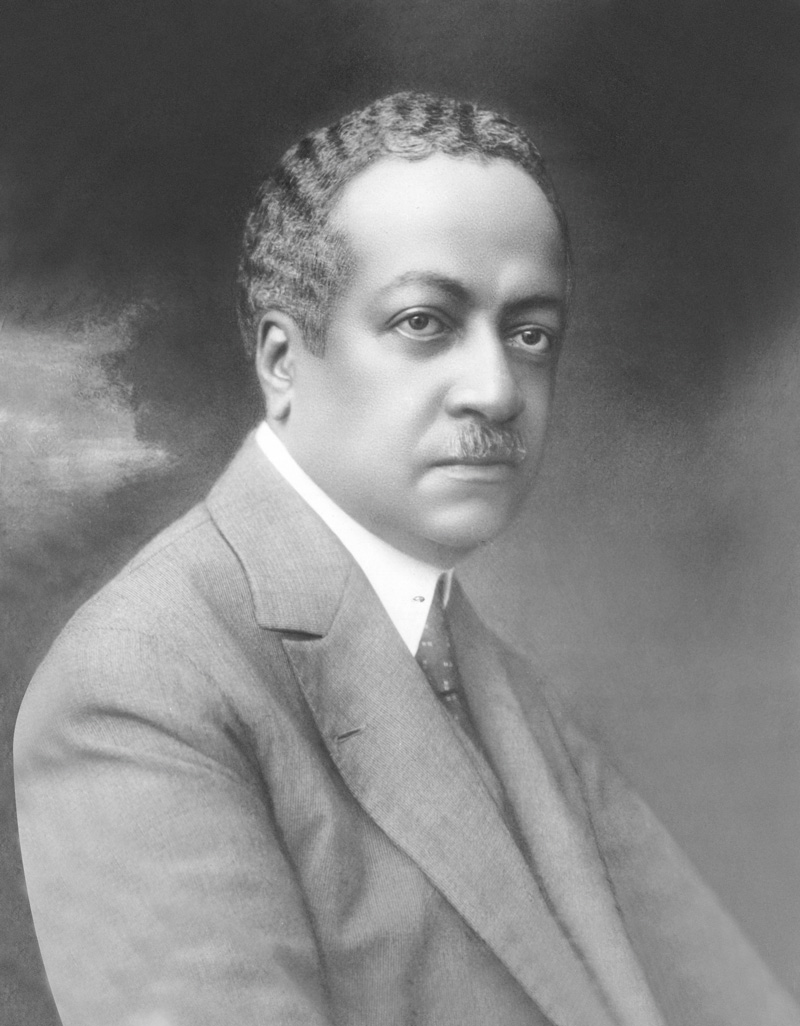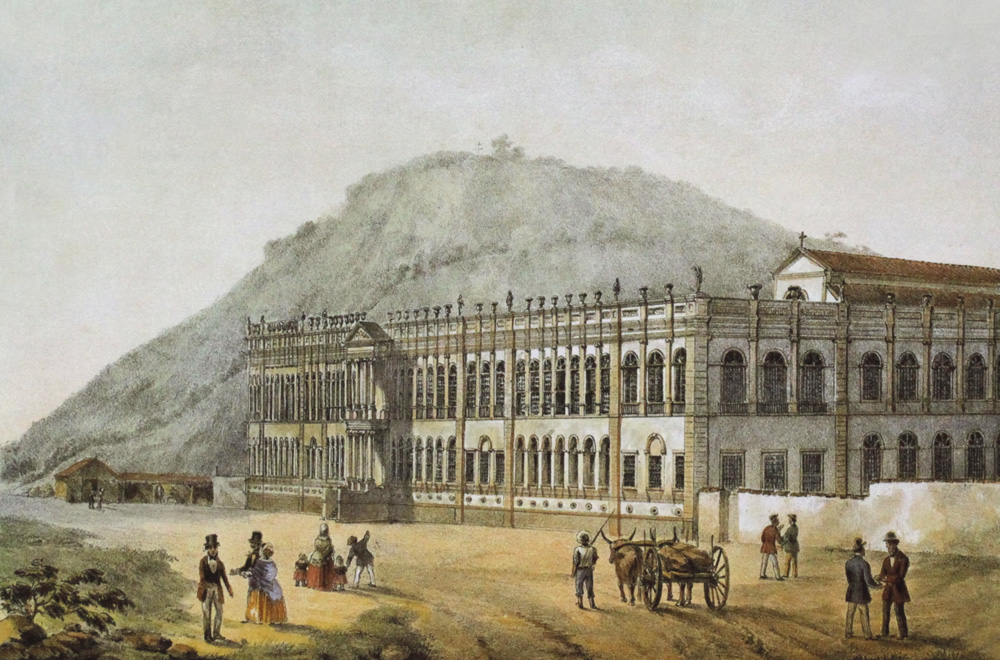It was almost impossible to walk the streets of Rio de Janeiro in the early 1830s without encountering mentally ill wandering its alleyways and streets. They were generally committed to hospitals run by Santa Casa de Misericórdia or placed in the public jail, from which none returned other than dead. Confined in fetid and narrow cubicles, many spent their days in chains. Those committed to the care of religious institutions not uncommonly suffered corporal punishment. The state of abandonment of the mentally ill attracted the concern of some members of the Imperial Academy of Medicine and the Rio de Janeiro School of Medicine, who launched a campaign to create an institution for the care of the insane. They argued that the Santa Casa hospital was not suited to cure these individuals’ illnesses. In answer to their appeal, the Emperor commissioned the construction of the Pedro II Lunatic Asylum, the first facility for the mentally ill in Brazil. However, it was not until the early twentieth century that patients with mental illness began to receive care from specialized physicians.
The decree authorizing the construction of the asylum was promulgated by Emperor Pedro II (1825–1891) in July 1841, based on a bill drafted by politician José Clemente Pereira (1787–1854), who managed the Santa Casa chapter in Rio de Janeiro. The emperor provided most of the funds for the works, with the rest coming from the Brotherhood of Mercy and wealthy families in Rio de Janeiro. The Pedro II Asylum, also known as the “Lunatics’ Palace”, opened in December 1852. It was built near Botafogo Bay, “in a wholesome neighborhood, commanding an ample view of the sea and wooded mountains, a convenient distance from the rich suburb of Botafogo and the local tram terminal,” as described by the physician Philippe-Marius Rey of the Saint-Anne Insane Asylum in Paris, France, in L’hospice Pedro II et les aliénés au Brésil.
Mentally ill from across the country were taken to Rio in the hopes they would be committed
The hospital adopted the ideas of the French alienists Philippe Pinel (1745–1826) and Jean-Étienne Esquirol (1772–1840), who recommended isolation, control, and vigilance to keep patients away from the sources of their madness. “Alienation was to psychiatrists of the time an expression of moral affections, while the passions of the soul were considered to be the causes of madness. Hence, excesses in love or that infringed social norms were to be tamed by reason,” explains historian Ewerton Moura da Silva of the University of São Paulo School of Medicine (FM-USP). “To counter these excesses, individuals were exhorted to regain rational command of self by moral and physical means, ranging from persuasion to conventional straitjackets and cold showers.”
Pedro II was built to accommodate up to 140 patients, according to research at the National Archives by historians Monique de Siqueira Gonçalves, from the Institute of Philosophy and Social Sciences at the Federal University of Rio de Janeiro (UFRJ), and Flávio Coelho Edler of the Oswaldo Cruz Foundation (FIOCRUZ). From a review of reports written by the Santa Casa chapter in Rio, they learned that the asylum’s fame soon spread throughout the country. The mentally ill were often taken on steamers to Rio. “Upon arrival at the Court, they were left to wander the city in the hopes that they would eventually be picked up by the police and taken to the asylum, where they were admitted as indigents,” Gonçalves and Edler wrote in an article published in the Latin American Journal of Fundamental Psychopathology. Another problem is that the police were initially unaware of the purpose of the asylum and who ought to be sent there. As a result, all persons deemed by law enforcement authorities to be disturbing the peace, from epileptics to drunks, were committed.

2 Fátima de Vasconcellos Archives
Clinical staff at the National Lunatic Asylum in Rio de Janeiro, 19042 Fátima de Vasconcellos ArchivesThe asylum building was completed in 1854, its capacity increasing to 300. The growing demand for vacancies was a perpetual problem for the hospital’s managers. The situation was at its most critical in 1862. In a letter sent to the asylum’s provedor, physician Manoel José Barbosa complained that the facility already housed 400 patients and that the flocking numbers of new arrivals had become abusive. He asked the managers to close the asylum to further admissions, stressing the need to create a dedicated facility for the disabled, who filled most of its wards.
Pedro II remained under the management of Santa Casa until in 1890 it came under the auspices of the Federal Ministry of Justice and Homeland Affairs; it was renamed as the National Lunatic Asylum, and the sisters of charity were relieved of their duties in its wards. In 1903, the asylum was placed under the charge of Bahian physician Juliano Moreira (1873–1933), one of the first to introduce in Brazil the ideas of Sigmund Freud (1856–1939), the Austrian physician who fathered psychoanalysis. During his 27 years as head of the asylum, Moreira helped to cement psychiatry as a medical specialty in Brazil, with its new ideas and practices. Inspired by the Munich Clinic in Germany, headed by Emil Kraepelin (1856–1926), he abolished the use of straitjackets and removed the iron bars from the windows (see Pesquisa FAPESP, issue No. 124).

Fátima Vasconcellos Archives
Bahian physician Juliano Moreira, one of the first to introduce Sigmund Freud’s ideas in BrazilFátima Vasconcellos ArchivesBy 1944, the aging Pedro II building had fallen into decay and could no longer provide adequate care to the mentally ill. Between March and September that year, they were transferred to a colony in the district of Jacarepaguá. The former asylum complex was donated to and refurbished by the University of Brazil (now UFRJ). It now houses the university’s Psychiatry Institute.
According to psychiatrist and medicine historian Ana Maria Galdini Raimundo Oda of the School of Medical Sciences at the University of Campinas (FCM-UNICAMP), the Pedro II Asylum became a precursor of several other similar facilities for the treatment of the mentally ill throughout Brazil. Oda and a fellow professor at FCM-UNICAMP, psychiatrist Paulo Dalgalarrondo, conducted a study on the history of the first asylums built in Brazil. They found that politicians, intellectuals, and philanthropists had led the initiative to institutionalize the mentally ill during the Second Reign, between 1840 and 1889, and that a consensus had formed in public opinion that the mentally ill needed to be placed in confinement, even if against their will.

Folhapress
A psychiatrist supervises a patient’s infrared session at the Juquery AsylumFolhapressThis period saw the creation of the Olinda Lunatic Asylum in Pernambuco, in 1864; the Provisional Lunatic Asylum in Belém, Pará, in 1873; the São João de Deus Lunatic Asylum in Salvador, Bahia, in 1874; and the São Pedro Asylum in Porto Alegre, Rio Grande do Sul. In São Paulo, the Provisional Lunatic Asylum was founded in 1852, the same year as Pedro II. “Unlike its other counterparts in Brazil, however, the facility in São Paulo was not run by Santa Casa, which refused to admit the mentally ill for care,” explains Oda. The costs of providing institutional care for the mentally ill, she explains, had to be defrayed by the then-president of the province, José Tomás Nabuco de Araújo (1813–1878), who appointed Ensign Tomé de Alvarenga as administrator.
The asylum opened its doors in a rented building on Rua São João, in the city center. Like most mental asylums, it was staffed by one or two medical doctors. “Psychiatry was still establishing itself as a medical specialty at the time in Brazil, and specialist training would only begin to become mainstream at the turn of the twentieth century,” says Oda. The São Paulo asylum initially had nine patients. After several years, and in response to criticism of the building’s poor conditions, the asylum and its patients were moved to a newly purchased property on Tabatinguera street, in Várzea do Carmo. Tomé de Alvarenga remained the administrator and was only replaced on his death, in 1868, by his son Frederico Antônio de Alvarenga, who in turn was succeeded on his death in 1896 by Francisco Franco da Rocha.

Eduardo Cesar
A facade of one of the surviving buildings at Juquery, in Franco da RochaEduardo CesarAn alumnus of the Rio de Janeiro School of Medicine, Franco da Rocha (1864–1933) was one of the first to specialize in psychiatry in Brazil, alongside Juliano Moreira. He was appointed as head of the asylum in 1891 and organized a campaign to build a new, modern facility in the city. The project drew on recommendations presented and discussed during the International Congress of Alienists of 1889 in Paris, France, on the development of agricultural colonies attached to lunatic asylums. The principle, according to historian Ewerton Moura da Silva, was that farm work could be used as a therapeutic activity, distracting patients and improving their behavior.
The Juquery Lunatic Agricultural Colony was opened in May 1898. The complex was built on 170 hectares of land less than 50 kilometers from the city, its buildings designed by architect Francisco Ramos de Azevedo (1851–1928). The asylum expanded quickly. Originally built to house 300 patients, it underwent successive expansions to accommodate growing demand. By 1901 Juquery housed 590 patients; by 1912 there were 1,250; and by 1928 there were just over 2,000, segregated in five buildings for female patients, four for male patients, and one for children. There was a waiting list of several thousands of people looking to be admitted.
The most common diagnosis was schizophrenia, but many individuals were also committed for melancholia
Many patients were Portuguese immigrants, as Silva describes in his book Do sonho à loucura: Hospitais psiquiátricos e imigração portuguesa em São Paulo (1929–1939) (From dream to madness: Psychiatric hospitals and Portuguese immigration in São Paulo [1929–1939]). He found 483 records of Portuguese immigrants committed at Juquery. The most common diagnosis was schizophrenia. There were also individuals committed for melancholia, likely associated with homesickness, he conjectures. “Immigrants were often committed for wanting to return to Portugal.”
The situation began to change in the 1980s when the standards on psychiatric treatment were reformulated. Today, part of the land formerly hosting the asylum is now part of the Juquery State Park, in a city named after Franco da Rocha. Six surviving buildings house 123 patients, but most of the 60 buildings are now closed and vacant, and their fate remains uncertain.
Republish

